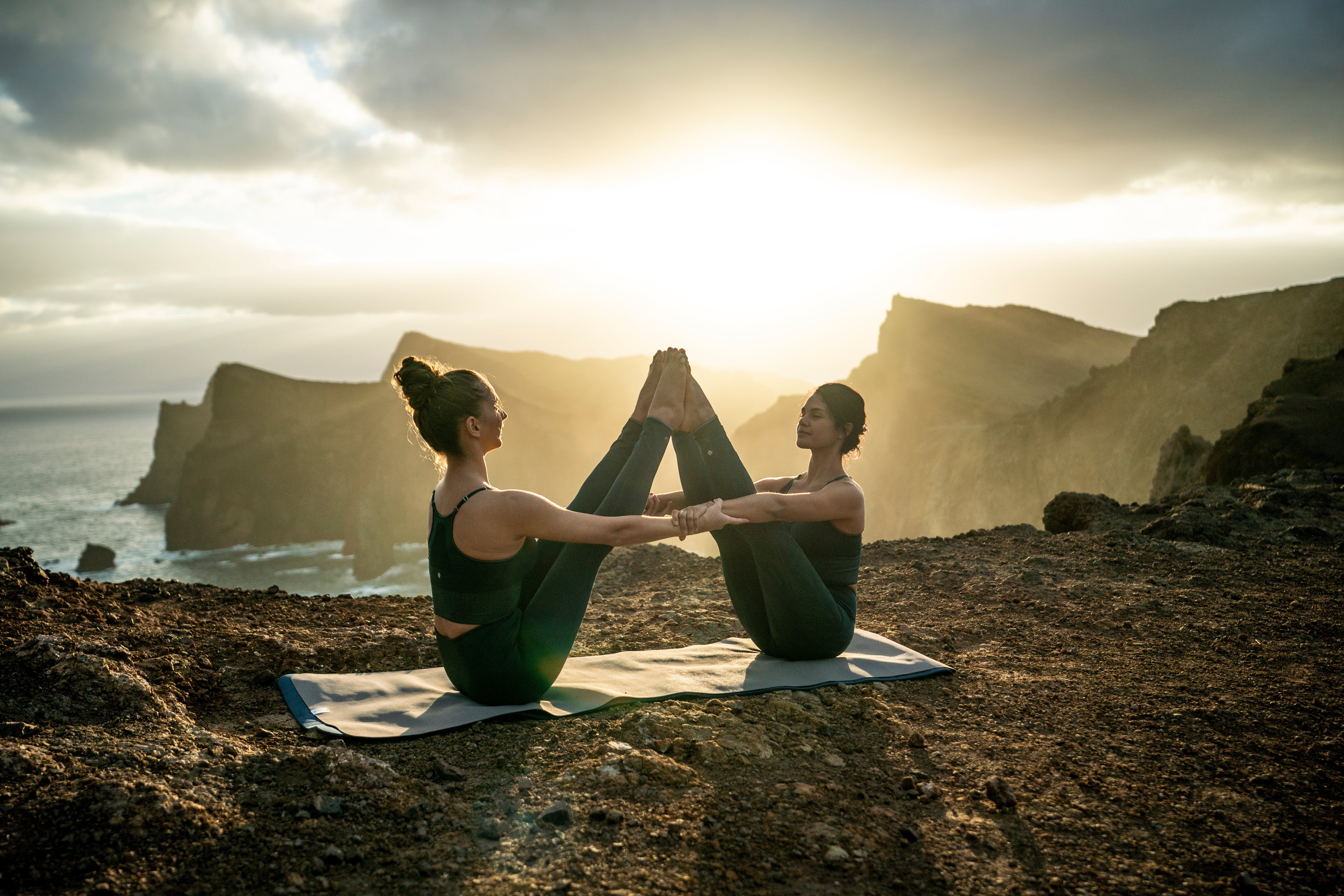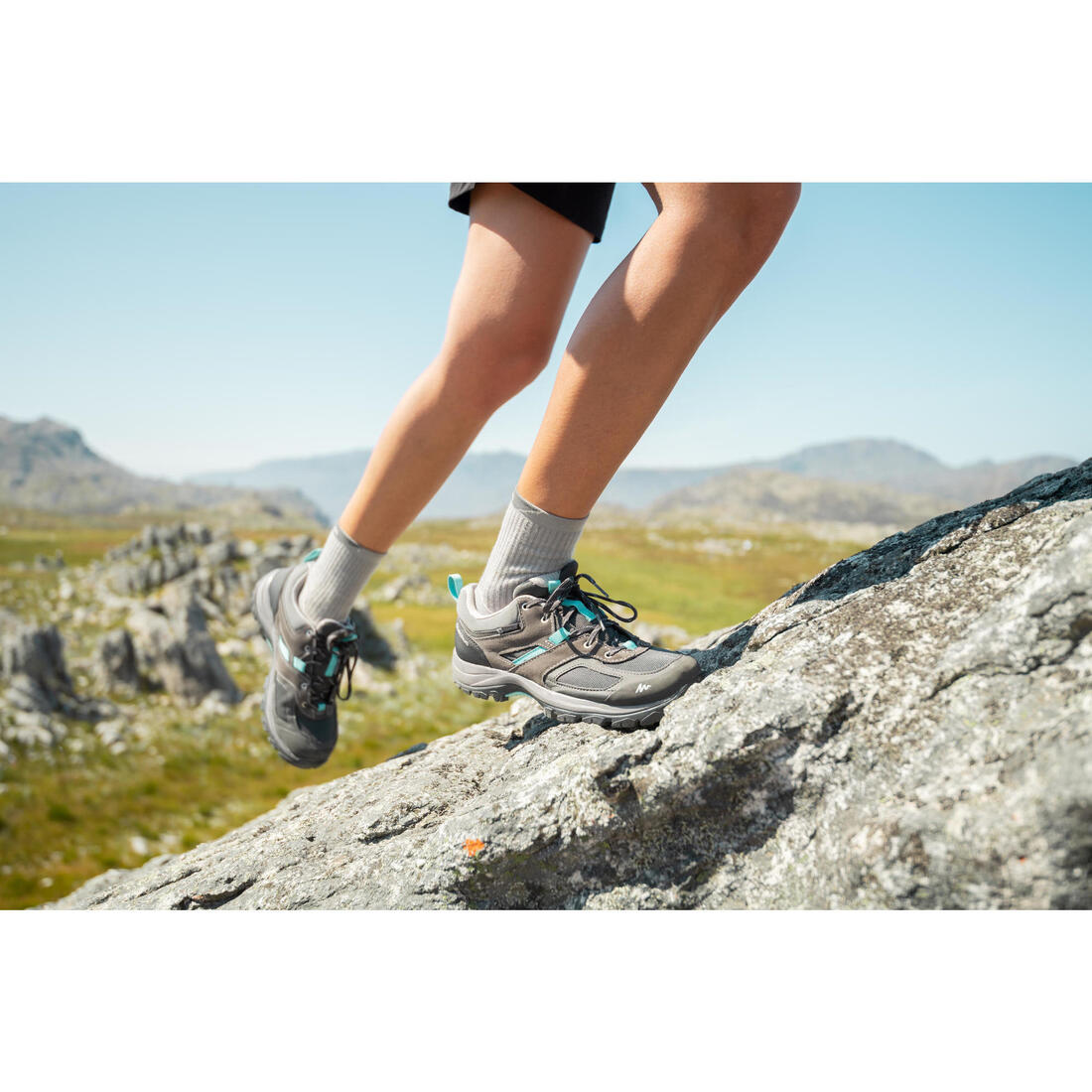The waterproof shoe made for occasional mountain walking, designed at the foot of the Mont Blanc!
WHAT IS YOUR HIKING FREQUENCY AND INTENSITY?
We have classified our products in terms of performance and features for 3 levels of Mountain Walking:
- occasional: about 10 hikes per year of about 3 to 4 hours in length, covering less than 10km and less than 700m in elevation gain.
- Regular: about 20 outings per year. 4 to 6 hours, 10 to 20 km, 700 to 1200m of elevation gain per outing.
- Intensive: more than 20 times a year. More than 6 hours, more than 20 km, 1200 to 2000m of elevation gain per outing.
SOLE WITH GRIP
The grip of our soles is certified. To be awarded certification, the boots must pass laboratory tests to assess the grip rate on different surfaces (Smooth, Rugged, Dry, Wet). To validate these tests, we assess the quality of our soles in the field, in the mountains, by a panel of representative testers over 500 km
Waterproofing test
In a laboratory, the shoe is immersed in water to mid-height on a mechanical arm that flexes to simulates a number of steps. With this test we can determine a time and number of km that the boot can walk while staying dry. Then we confirm in the field or under the rain, that the shoe meets its promises.
Making waterproofing last longer
To keep your feet dry, we advise you to use a gaiter or mini-gaiter to protect the top of your boots and prevent water and also pebbles and sand from getting in
We advise re-waterproofing your boots twice a year using a re-proofing agent (search for ‘waterproofing’ on our decathlon website) which will help you restore the original water-repellent qualities and fight against stains on the outside.
Which size should I select?
‘The most important thing is to try on several styles of boots to find the one most suited to you!
You can take a size above your usual one to prevent the toes from bumping into the toe box when going downhill, provided the foot is properly supported to avoid friction.
Tip: keep your toenails short and, before descending, check that your lacing prevents your foot from sliding forwards inside the shoe."
BUYING TIPS / HOW DO YOU TRY YOUR BOOTS ON?
Some Decathlon stores have a test route.
1. Try on both shoes, standing up, with the socks worn for hiking.
2. Tighten the laces, taking care to correctly balance the tightening.
3. Check two points:
- the heel does not come up before the shoe when you walk uphill.
- the foot does not slide and the toes do not press against the front when going downhill.
4. Try on several sizes and models.
Break them in gradually to adapt them to your foot.
Optimise the capabilities of your boots: replace your insoles!
The original insole in your shoes is designed to accommodate most feet. A change of insole can bring:
1. Improved support: some soles are preformed or reinforced to better support the arch of the foot.
2. More comfort: the insoles can also provide heat and/or cushioning.
3. Longer life: restore the support and comfort of your shoes by replacing the insole each season.
HOW DO YOU AVOID BLISTERS?
Blisters generally develop when the skin is weakened by friction. In order to prevent them from occurring, we recommend the following:
- Choose a shoe in your size.
- Wear suitable socks
- Tie and tighten your shoes properly.
- Make sure you tighten or loosen your laces accordingly while wearing your shoes, especially before starting a climb or a descent.
- Wear your shoes on a short trip for the first use.
FIELD TESTS
All our shoes are tested for initial comfort and comfort in use by hikers (who do not work for Decathlon) under the same conditions you will encounter yourself when hiking. The aim is to further develop the product and validate it as objectively as possible, for your greatest satisfaction.
Lab tests
Further laboratory tests were conducted to test the following elements: attachment of eyelets and webbing, assembly, toxicology, UV resistance, sole and upper component abrasion, accelerated ageing.
Lab tests
Further laboratory tests were conducted to test the following elements: attachment of eyelets and webbing, assembly, toxicology, UV resistance, sole and upper component abrasion, accelerated ageing.
Walk comfortably in the mountains with these waterproof shoes, providing cushioning and protection for your feet. The stone-guard protects your toes, while the waterproof membrane keeps your feet dry.
The waterproof shoe made for occasional mountain walking, designed at the foot of the Mont Blanc!































